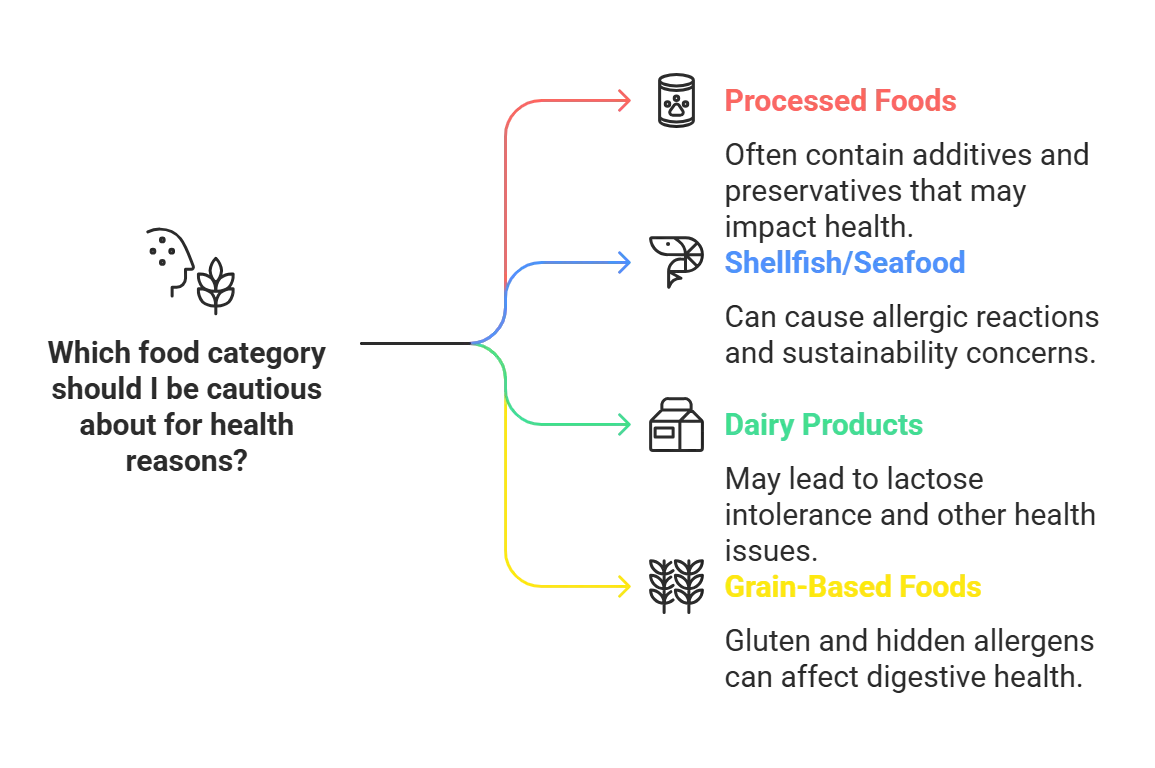
What Foods Should We Avoid With Dust Mite Allergy?
Waking up with a stuffy nose and itchy eyes is frustrating enough. But did you know certain foods may make dust mite allergies even worse? The last thing you need is a hidden trigger making symptoms harder to manage.
Some foods share proteins with dust mites, confusing the immune system and intensifying allergic reactions. Dairy, shellfish, and processed snacks might be culprits, making congestion, itching, or breathing issues harder to control. But figuring out what to avoid isn’t always straightforward.
At Frontier Allergy, Asthma, and Immunology, we help connect the dots between food and allergy symptoms. Let’s explore which ingredients could be working against you and how to adjust your diet for relief.
Causes of Dust Mite Allergy
Ever wonder why some people react more strongly to dust than others? The culprit lies in the body’s sensitivity to dust mite droppings and sheds skin. These tiny particles become airborne, leading to nasal congestion, coughing, and breathing difficulties.
Dust mite allergy implications vary from mild irritation to severe inflammation, especially for those with asthma. When the immune system perceives dust mites as harmful, it triggers allergies and immune responses that release histamines, causing itchiness, swelling, and discomfort. Understanding these reactions can help determine how to reduce exposure and ease symptoms.
Symptoms of Dust Mite Allergy
Constant sneezing, watery eyes, and an itchy throat might point to more than seasonal allergies. Allergy-induced symptoms linked to dust mites often resemble the common cold but linger for longer periods. Some may also experience facial pressure and frequent sinus infections.
Interestingly, certain foods can exacerbate these reactions. Though dust mites themselves aren’t ingested, reactions to dust mite-eaten foods like aged cheeses or fermented items could worsen respiratory symptoms. Being aware of how food affects allergy symptoms plays a crucial role in managing flare-ups.
How the Immune System Reacts to Dust Mites
The immune system treats dust mites as invaders, leading to inflammation and persistent symptoms. Over time, repeated exposure increases sensitivity, making reactions worse. Runny nose, itchy skin, and wheezing become more noticeable with prolonged contact.
Even processed items can strengthen the connection between dust mite allergy and food processing. Additives and preservatives in certain foods might heighten the immune system and dust mite allergy interactions, making some meals harder to tolerate. Being strategic about food choices may help reduce reactions.
The Link Between Diet and Dust Mite Allergy
Food choices don’t just affect digestion—they also play a role in allergy flare-ups. Many don’t realize the impacts of diet on dust mite allergy, as certain foods can either aggravate or calm symptoms. A well-balanced diet may help regulate the body’s immune response.
Following dietary guidelines for dust mite allergy can promote better symptom management. Anti-inflammatory foods, hydrating ingredients, and proper nutrition advice for dust mite allergy sufferers can all help keep reactions at bay.
How Food Can Influence Allergy Symptoms
Some meals leave people feeling worse, while others seem to help. This is why modifying a diet for dust mite allergy is essential in identifying problem foods. Some experience worsening congestion, itchiness, or fatigue after consuming certain ingredients.
It’s also important to distinguish between food intolerance vs dust mite allergy. While intolerance affects digestion, allergies trigger immune responses like nasal inflammation or respiratory issues. Keeping a food journal could help track which meals cause discomfort.
Cross-Reactivity Between Dust Mite Allergy and Certain Foods
Ever had shrimp and noticed a tickle in your throat? That’s because shellfish and dust mite allergy tend to overlap. The proteins found in dust mites are similar to those in crustaceans, leading to cross-reactivity with dust mite allergy in sensitive individuals.
Some may also react to molluscs like clams or oysters for the same reason. If symptoms arise after eating seafood, it may be worth discussing food testing with a healthcare provider.
Identifying Food Triggers and Reactions
Knowing what foods cause allergic reactions helps in preventing flare-ups. Common culprits include aged cheeses, fermented foods, and shellfish. Some also experience issues with processed meat and alcohol.
Paying attention to foods triggering dust mite allergy is crucial for symptom control. Reading ingredient labels, keeping meals simple, and noticing patterns in reactions can help pinpoint specific triggers.
Foods to Avoid with Dust Mite Allergy
- Rye
- Shrimp
- Fish
- Grits
- Flour-based products
- Oats
- Wheat
- Lobster
- Barley
- Crab
- Walnuts
- Pistachios
- Aged Cheeses
- Milk
- Cheese
- Yogurt
- Bread
- Pasta
- Pancakes
- Alcohol
Not all foods are created equal when it comes to allergies. Some meals worsen symptoms, while others are easier on the immune system. Those with dust mite allergies should be cautious about foods triggering dust mite allergies, especially when it comes to highly processed ingredients.
Here are some more food categories you should avoid with dust mites allergy:

1. Processed and Packaged Foods
Packaged snacks might be convenient, but they can worsen symptoms. Many processed foods and dust mite allergy reactions stem from additives, preservatives, and artificial flavourings.
Checking allergen labelling on food helps in avoiding unnecessary flare-ups. Foods with extra chemicals, artificial sweeteners, or unidentified “spices” might be hiding potential triggers.
2. Shellfish and Other Seafood
Seafood lovers might need to rethink their diet. Since shellfish and dust mite allergies share similar proteins, eating shrimp, crab, or lobster can lead to itching, swelling, or even anaphylaxis.
These dangerous foods for dust allergy sufferers pose a hidden risk, especially when dining out or ordering unfamiliar dishes. If reactions occur, eliminating shellfish could offer noticeable relief.
3. Dairy Products and Their Impact
Milk and cheese often make allergy symptoms more severe. Dairy products increase mucus production, making congestion worse. Those prone to respiratory issues might struggle more after consuming them.
Being mindful of common allergens in food means paying close attention to nutrition advice for dust mite allergy sufferers. Swapping dairy for plant-based alternatives could ease symptoms naturally.
4. Gluten and Other Grain-Based Foods
Wheat and gluten can be troublesome for some with dust mite allergies. These ingredients may cause inflammation that worsens breathing difficulties.
For those with allergenic ingredients to avoid, choosing meals to avoid dust mite-allergic individuals means replacing wheat products with quinoa, rice, or oats.
5. Hidden Allergens in Everyday Foods
Unexpected ingredients can trigger allergic reactions without warning. Hidden allergens in food lurk in sauces, condiments, and baked goods. Even health drinks or flavoured yogurts may contain problematic additives.
Knowing food allergen labeling regulations can help make safer choices. Checking for ambiguous terms like “natural flavors” ensures fewer unexpected reactions.
Safe Eating Strategies for Dust Mite Allergy
Managing an allergy requires careful planning. Allergy-friendly diet tips can reduce risks while promoting better meal choices. Following dietary guidelines for dust mite allergy ensures fewer unexpected flare-ups.
Avoiding cross-contamination with allergens plays a huge role in staying symptom-free. Preparing meals safely and choosing whole, unprocessed foods can help minimize exposure.
Cooking at Home for Allergy Safety
Eating home-cooked meals means controlling ingredients and food preparation. Cooking at home with dust mite allergy helps prevent allergens from sneaking into meals.
Simple food preparation techniques for dust allergies include washing ingredients thoroughly and keeping surfaces clean. Limiting pre-packaged sauces and bases also reduces risks.
Book Your Allergy Testing Appointment Today
Schedule your appointment today and begin your journey to relief with Frontier Allergy & Asthma. Our allergist in austin is committed to delivering accurate allergy testing, helping you better understand and control your symptoms.
Through personalized care and advanced diagnostics, we’re dedicated to guiding you toward improved health.
Together, we’ll find the solutions you’ve been searching for. Take the first step toward a healthier, allergy-free life—your path starts here!

Written/Reviewed by: Dr. Neha Reshamwala
NPI number: 1780874578
Page last reviewed:


 All blog posts
All blog posts





